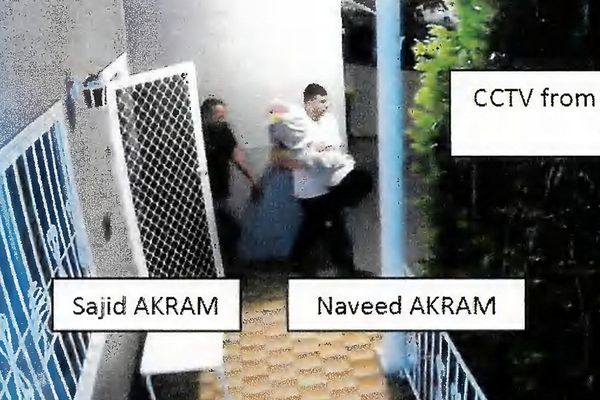
The Building Commission NSW is using old parking infringement notice books with carbon paper to issue fines to builders and developers who break the law, the state’s building commissioner, James Sherrard, has confirmed.
Officers are required to cross out the words “Department of Motor Transport” and write “Building Commission NSW” on the notices, with duplicate copies made using carbon paper. In 2024-25, the commission issued 202 infringement notices.
As the Minns government seeks to accelerate construction times to meet its pledge to build 377,000 new homes by 2029 under the National Housing Accord, the organisation responsible for enforcing building standards is scrambling to equip itself with the necessary data and systems.
“That is correct,” Sherrard said when asked about the commission using old carbon paper ticket books.
“We are very close to turning those into a digital platform – it should be in place before the end of this calendar year – but for now, yes, people really understand what CC stands for, as in carbon copy.”
The ABC reported in April that the building commission did not have access to police databases, so it could not conduct criminal checks on tradies before issuing building licences.
There are concerns that the agency, established in late 2023, is struggling to create a cohesive investigative culture with modern data collection due to a lack of digital platforms.
Tim James, the opposition’s fair trading spokesperson, said the building commission needed a modern system to efficiently issue and track fines.
“Dodgy builders move fast, yet the building commission is stuck scribbling fines on carbon paper,” he said. “Enforcement is only as strong as the tools behind it and right now those tools are outdated.”
• Sign up for Guardian Australia’s breaking news email
The NSW government announced in the 2025-26 state budget that it had allocated $145m over four years to fund the organisation charged with policing shoddy builders.
This was the first time the commission had been given permanent funding, which would be supplemented with revenue from fines.
Sherrard said the funding would allow the agency to do its job, provided the government did not dramatically increase its scope – or the number of projects it oversaw.
It had taken time to compile a team from disparate parts of the public service and to build its capabilities, Sherrard said.
“Our analytics team is improving daily and we are getting better quality information. So when we look at our complaints now, we can see what percentage of those relate to apartments and what [percentage] relates to dwellings,” he said.
The inaugural building commissioner, David Chandler, was appointed in 2019 after cracks appeared in Opal Tower at Olympic Park and at the Toplace development in Mascot.
Since then, the government has expanded the commission’s remit beyond allegedly shoddy apartments to all residential buildings, including houses and renovations.
Sherrard said class 1 buildings – residential houses – make up “the overwhelming majority” of the building commission’s work.
He said problems often arose with unlicensed builders and builders who failed to provide written contracts as required.
The Minns government’s push to speed up the planning process in NSW includes streamlined approvals for compliant developments and fast-tracking state significant developments.
Sherrard said he believed standards were improving despite pressure to build homes more quickly.
He said the commission had moved from being reactive when responding to complaints about faulty buildings to a more predictive model.
The commission now examines development plans lodged with councils and the planning department and maintains a list of high-risk developers whose work needs more rigorous review.
“I’m very cognisant of how much noise I make about individuals because it’s a very, very small element within the industry, but me making a noise about it in media or social media does a tremendous amount of damage to consumer confidence,” Sherrard said.
“It’s very difficult to find people willing to buy off the plan at this point in time. So … we’re paying particular attention to those individuals who we are aware of and are bad players, and we are running through effective prosecutions, and we’re trying to shift them out of this industry.
“It’s about balancing consumer confidence and awareness at the same time.”
The commissioner said the main way people could protect themselves against shoddy developers was to search their builder or tradesperson on the commission’s website to see if they had any building offences.







